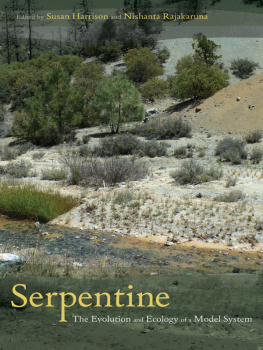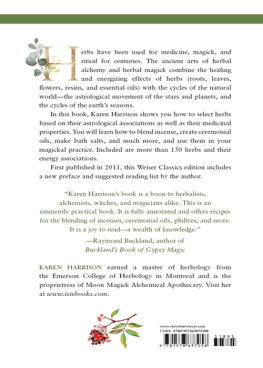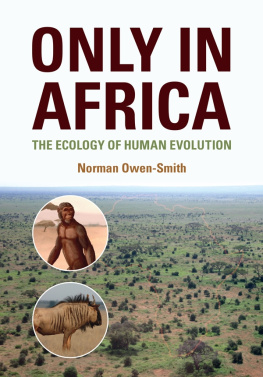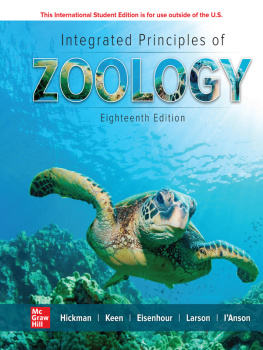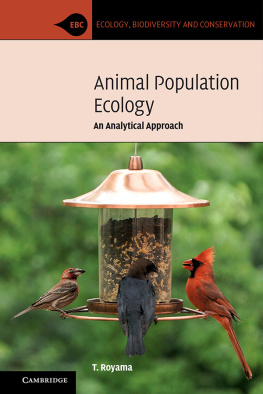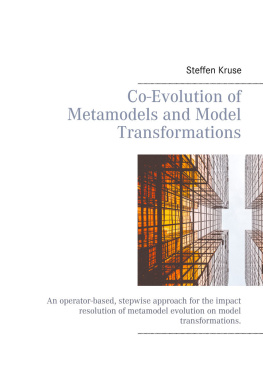Harrison - Serpentine: the evolution and ecology of a model system
Here you can read online Harrison - Serpentine: the evolution and ecology of a model system full text of the book (entire story) in english for free. Download pdf and epub, get meaning, cover and reviews about this ebook. City: London;Berkeley;Calif, year: 2011, publisher: University of California Press, genre: Romance novel. Description of the work, (preface) as well as reviews are available. Best literature library LitArk.com created for fans of good reading and offers a wide selection of genres:
Romance novel
Science fiction
Adventure
Detective
Science
History
Home and family
Prose
Art
Politics
Computer
Non-fiction
Religion
Business
Children
Humor
Choose a favorite category and find really read worthwhile books. Enjoy immersion in the world of imagination, feel the emotions of the characters or learn something new for yourself, make an fascinating discovery.
- Book:Serpentine: the evolution and ecology of a model system
- Author:
- Publisher:University of California Press
- Genre:
- Year:2011
- City:London;Berkeley;Calif
- Rating:4 / 5
- Favourites:Add to favourites
- Your mark:
- 80
- 1
- 2
- 3
- 4
- 5
Serpentine: the evolution and ecology of a model system: summary, description and annotation
We offer to read an annotation, description, summary or preface (depends on what the author of the book "Serpentine: the evolution and ecology of a model system" wrote himself). If you haven't found the necessary information about the book — write in the comments, we will try to find it.
Serpentine: the evolution and ecology of a model system — read online for free the complete book (whole text) full work
Below is the text of the book, divided by pages. System saving the place of the last page read, allows you to conveniently read the book "Serpentine: the evolution and ecology of a model system" online for free, without having to search again every time where you left off. Put a bookmark, and you can go to the page where you finished reading at any time.
Font size:
Interval:
Bookmark:

Serpentine
The Evolution and Ecology
of a Model System
Edited by
Susan Harrison
Nishanta Rajakaruna

UNIVERSITY OF CALIFORNIA PRESS
Berkeley Los Angeles London
University of California Press, one of the most distinguished university
presses in the United States, enriches lives around the world by advancing
scholarship in the humanities, social sciences, and natural sciences. Its
activities are supported by the UC Press Foundation and by philanthropic
contributions from individuals and institutions. For more information,
visit www.ucpress.edu.
University of California Press
Berkeley and Los Angeles, California
University of California Press, Ltd.
London, England
2011 by the Regents of the University of California
Library of Congress Cataloging-in-Publication Data
Serpentine : the evolution and ecology of a model system / edited by Susan
Harrison and Nishanta Rajakaruna.
p. cm.
Includes bibliographical references and index.
ISBN 978-0-520-26835-7 (cloth : alk. paper)
1. Serpentine plants. 2. PlantsAdaptation. 3. PlantsEvolution.
4. plant-soil relationships. 5. SoilsSerpentine content.
I.Harrison, Susan(SusanPatricia),1961-II.Rajakaruna, Nishanta,1969
QK938.S45.S47 2010
581.4dc22 2010019373
Manufactured in the United States
19 18 17 16 15 14 13 12 11
10 9 8 7 6 5 4 3 2 1
The paper used in this publication meets the minimum requirements
of ANSI/NISO Z39.48-1992 (R 1997) (Permanence of Paper).
Cover illustration: Stream bank revegetation trial at New Idria serpentine
barrens, San Benito County, CA. Photo by Nishanta Rajakaruna.
CONTRIBUTORS
BRAIN L. ANACKER
University of California, Davis
BROOKE S. BAYTHAVONG
University of California, Davis
ROBERT S. BOYD
Auburn University
DAWN CARDACE
University of Rhode Island
VICTOR P. CLAASSEN
University of California, Davis
ELLEN I. DAMSCHEN
University of Wisconsin, Madison
KENDI F. DAVIES
University of Colorado, Boulder
SARAH C. ELMENDORF
University of British Columbia
BARBARA M. GOING
University of California, Davis
SUSAN HARRISON
University of California, Davis
TORI M. HOEHLER
NASA Ames Research Center
DAVID HOOPER
Western Washington University
PATRICK R. HUBER
University of California, Davis
KATHLEEN M. KAY
University of California, Santa Cruz
CHRIS R. MALLEK
University of California, Davis
KARA A. MOORE
University of California, Davis
ELDRIDGE M. MOORES
University of California, Davis
RYAN E. O'DELL
Bureau of Land Management
NISHANTA RAJAKARUNA
College of the Atlantic
KEVI J. RICE
University of California, Davis
HUGH D. SAFFORD
Pacific Southwest Research Station, USDA Forest Service
DOUGLAS W. SCHEMSKE
Michigan State University
MAUREEN L. STANTON
University of California, Davis
SHARON Y. STRAUSS
University of California, Davis
DIANE M. THOMSON
Claremont Colleges
JAMES H. THORNE
University of California, Davis
ROBBIN THORP
University of California, Davis
ERIC VON WETTBERG
Florida International University and Fairchild Tropical Botanical Garden
KIMIORA L. WARD
University of California, Davis
LORNA R. WATT
Michigan State University
AMY T. WOLF
University of Wisconsin, Green Bay
JESSICA W. WRIGHT
Pacific Southwest Research Station, USDA Forest Service
We are fortunate to belong to a thriving international community of scientists interested in serpentine ecosystems. In the past several decades, the efforts of this community have laid a solid foundation for understanding serpentine rocks, soils, floras, and faunas (see reviews in Proctor and Woodell, 1975; Kruckeberg, 1984, 2005; Brooks, 1987; Baker et al., 1992; Roberts and Proctor, 1992; Jaffre et al., 1997; Balkwill, 2001; Boyd et al., 2004; Alexander et al., 2006; Chiariucci and Baker, 2007; Rajakaruna and Boyd, 2009; Rajakaruna et al., 2009).
We are extremely grateful to our contributors for the expertise and dedication that made this book possible. We also thank our reviewers, who include David Ackerly, Paul Aigner, Bruce Baldwin, Robert Boyd, Emilio Bruna, Jean Burns, Sharon Collinge, Stella Copeland, Curtis Daehler, Katrina Duglosch, Elizabeth Elle, Anu Eskelinen, Paul Fine, Lila Fishman, Sophie Karrenberg, Scott Loarie, D'Arcy Meyer-Dombard, Risa Sargent, Matthew Schrenk, Mark Stromberg, and many of the chapter authors.
Finally, we especially thank three of the leaders in interdisciplinary studies of serpentinesoil scientist Earl Alexander, geologist Robert Coleman, and botanist Arthur Kruckebergfor the incomparable generosity and enthusiasm with which they have shared their knowledge.
LITERATURE CITED
Alexander, E. A., Coleman R. G., Keeler-Wolf, T., and Harrison, S. (2006) Serpentine Geoecology of Western North America. Oxford University Press, Oxford.
Baker, A. J. M., Proctor, J., and Reeves, R. D. (1992) The Vegetation of Ultramafic (Serpentine) Soils. Intercept, Andover, U.K.
Balkwill, K. (2001) Proceedings: Third international conference on serpentine ecology. South African Journal of Science, 97 (special issue).
Boyd, R. S., Baker, A. J. M., and Proctor, J. (2004) Ultramafic Rocks: Their Soils, Vegetation, and Fauna. Science Reviews, St. Albans, U.K.
Brooks, R. R. (1987) Serpentine and Its Vegetation: A Multidisciplinary Approach. Dioscorides Press, Portland, OR.
Chiarucci, A., and Baker, A. J. M. (2007) Proceedings of the fifth international conference on serpentine ecology. Plant and Soil, 293 (special issue).
Jaffr, T., Reeves, R. D., and Becquer, T. (1997) The ecology of ultramafic and metalliferous areas. Proceedings of the second international conference on serpentine ecology. ORSTOM Noumea, Documents Scientifi ques et Techniques III (special issue).
Kruckeberg, A. R. (1984) California Serpentines: Flora, Vegetation, Geology, Soils and Management Problems. University of California Press, Berkeley.
Kruckeberg, A. (2005) Geology and Plant Life. University of Washington Press, Seattle.
Proctor, J., and Woodell, S. R. J. (1975) The ecology of serpentine soils. Advances in Ecological Research, 9, 255366.
Rajakaruna, N., and Boyd, R. (2009) Soil and biota of serpentine: A world view. Proceedings of the Sixth International Conference on Serpentine Ecology. Northeastern Naturalist, 16 (special issue 5). Eaglehill Press, Steuben, ME.
Rajakaruna, N., Harris, T. B., and Alexander, E. B. (2009). Serpentine geoecology of eastern North America: A review. Rhodora, 111, 21108.
Roberts, B. A., and Proctor, J. (1992) The Ecology of Areas with Serpentinized Rocks: A World View. Kluwer, Dordrecht.
Terrestrial life, perched on the Earth's continental crust, has evolved on soils formed from relatively low-density rocks such as granite that are rich in silica, calcium, potassium, and phosphorous. The chemistry of these soils is usually amenable to plant growth almost by definition. Deeper in the Earth, forming its mantle and most of its oceanic crust, are darker and denser ultramafic (high-iron and -magnesium) rocks and minerals. Near the surface they may become serpentinizedaltered in contact with water. These submarine rocks are seldom seen on land but occasionally become stranded on the edges of continents during the process of subduction (the disappearance of one crustal plate beneath another). The resulting terrestrial islands of ultramafic rock, or serpentine outcrops, are truly unearthly in their appearance. (Serpentine is technically a mineral, but the same word is often used for all ultramafic rocks, the soils that form from them, and the unique ecosystems that form on them.) Serpentine soils are deficient in plant-essential nutrients and often also in organic matter, cation exchange capacity, and water availability, whereas they are enriched in magnesium and sometimes in nickel, chromium, and cobalt. This unusual chemistry gives rise to rocky, sparsely vegetated landscapes that form striking boundaries with the lusher vegetation on neighboring soils. In some parts of the world, serpentine has given rise to spectacular levels of plant endemism.
Font size:
Interval:
Bookmark:
Similar books «Serpentine: the evolution and ecology of a model system»
Look at similar books to Serpentine: the evolution and ecology of a model system. We have selected literature similar in name and meaning in the hope of providing readers with more options to find new, interesting, not yet read works.
Discussion, reviews of the book Serpentine: the evolution and ecology of a model system and just readers' own opinions. Leave your comments, write what you think about the work, its meaning or the main characters. Specify what exactly you liked and what you didn't like, and why you think so.

